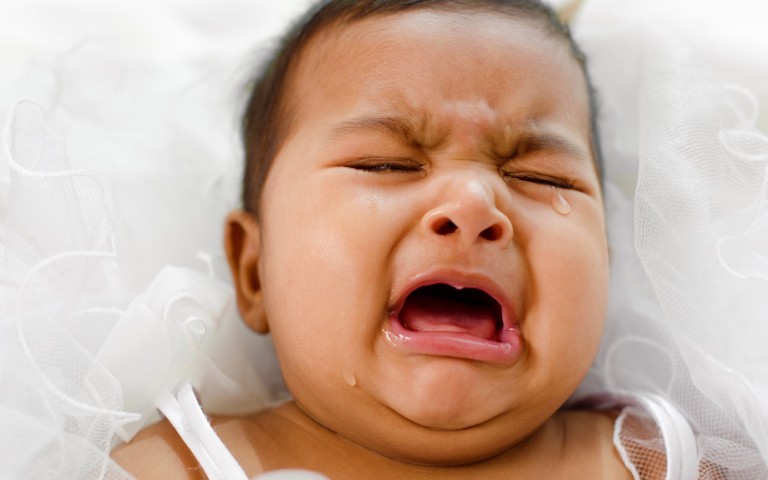
Photo: Szefei | Dreamstime.com
Critics of attachment parenting could argue that picking up a crying baby amounts to positive reinforcement for attention-seeking behavior. If you attend to your cranky child at the drop of a hat, you are essentially teaching them that you will be there at their beck and call. However, a new study from Japan echoes the sentiments of advocates for attachment parenting and mothers world over: holding a fussing baby can calm them down and let you get to the root of their dissatisfaction.
In the study, when mothers carried their babies and walked around, the children were significantly more relaxed, resulting in them ceasing to cry and squirm. Their increased heart beat also slowed down, showing that the children were feeling calmer. The study also observed similar patterns in mouse babies.
Researcher Dr. Kumi Kuroda, who investigates social behavior at the RIKEN Brain Science Institute in Saitama, Japan, said, “Infants become calm and relaxed when they are carried by their mother.”
In the study, researchers reviewed the responses of 12 healthy infants between the ages of one month and six months. The data implied that the most effective way for mothers to calm a crying child in a 30-second period was by holding the baby or carrying him while walking. Infants experienced the most relaxation when they were carried by a walking mother, when compared with infants whose mothers sat in a chair and held them.
While observing experiments on both humans and mice, Kuroda said she was surprised at how fast the heart rate slowed once a mother started walking. Mice pick up their young by the scruff of their neck with their mouths. This lead to the implication that walking is by far more soothing than other means of calming an infant such as rocking.
Picking up your child when he or she is crying can also be useful in case of underlying problems or illness that may not be obvious. If the child fails to be calmed down after they have been picked up or starts again once they have been put down from carrying, it could point to signs that the child is in pain or feeling hungry.
Kuroda recommends that when a baby starts crying, a brief period of carrying may help parents to identify the cause of the tears. This comfort may not completely halt crying, but it can prevent parents from becoming frustrated.
“Our study suggests why some babies do not respond well to the ‘cry-it-out’ parenting method,” Kuroda said, referring to the technique by which parents of children a certain age let them cry themselves to sleep without physical comfort from either parent. This is done with the intention that the baby will learn to soothe itself in the future.
Do you let your baby cry it out or pick her up? Share your thoughts, leave a comment below. Please like FamiLife’s page on Facebook so that you get all our articles and others may find us.
